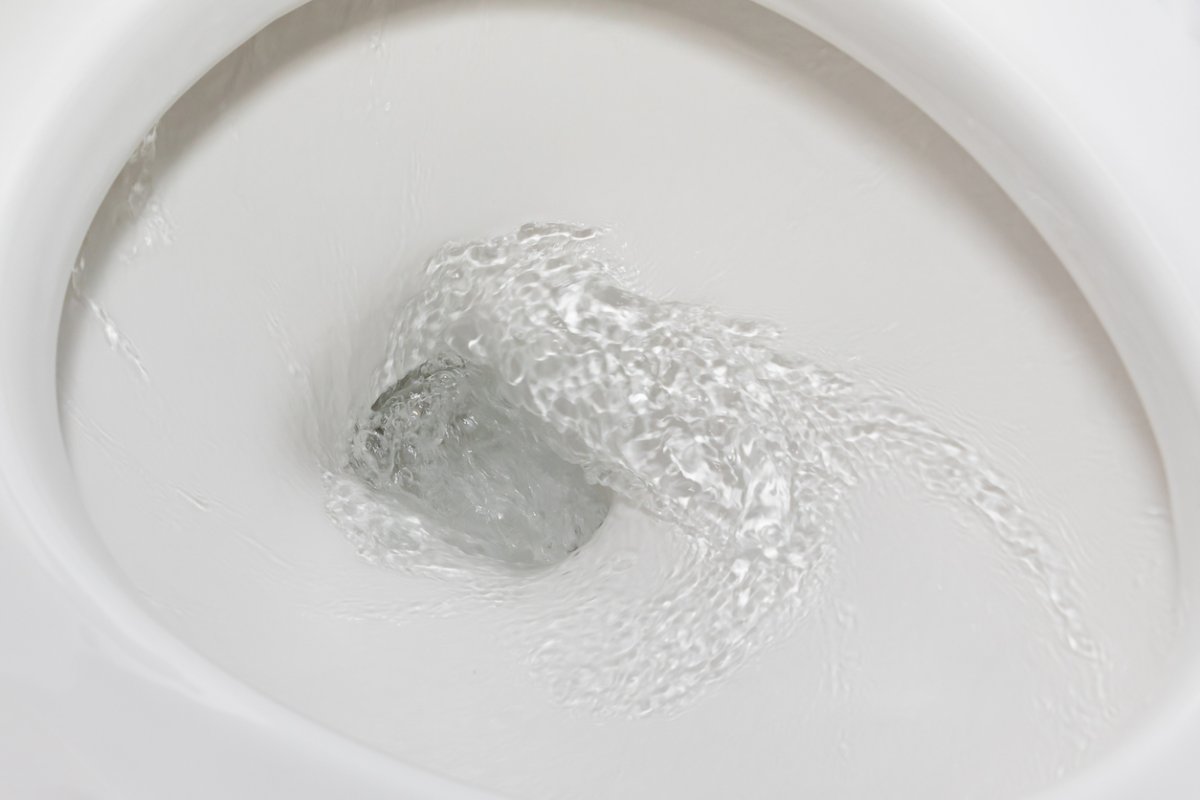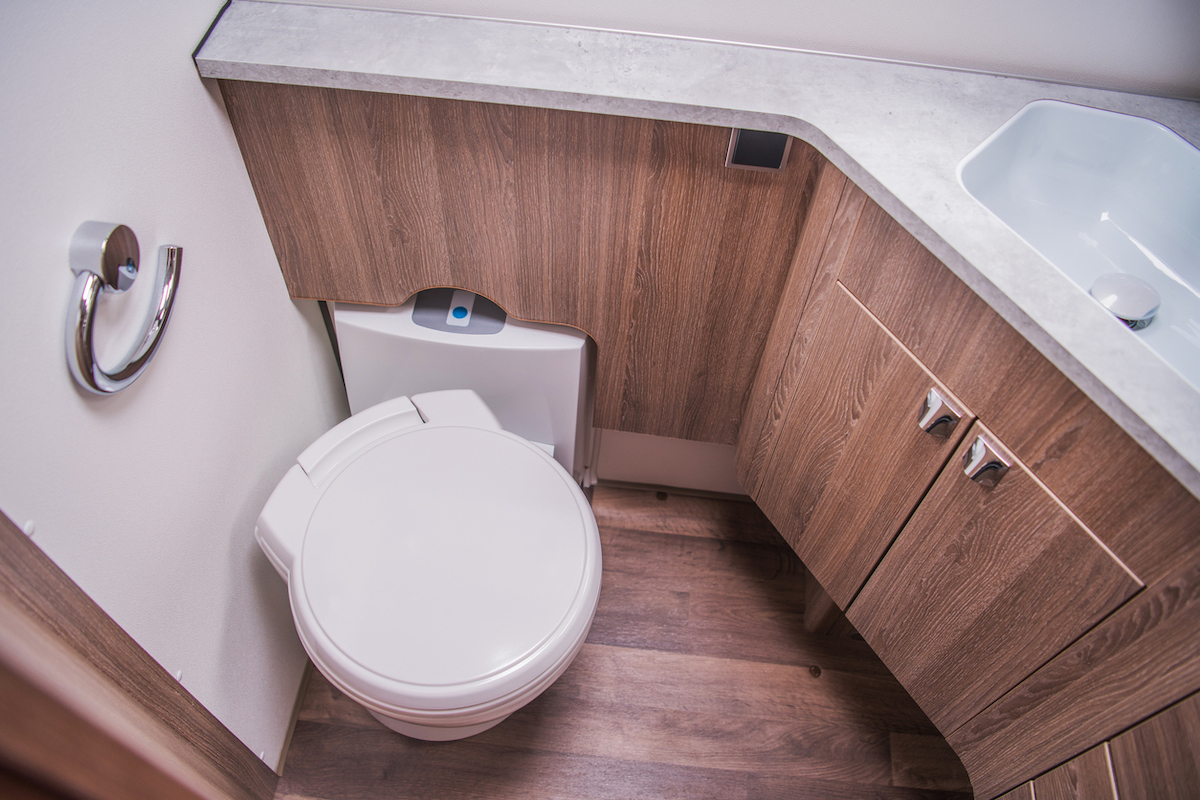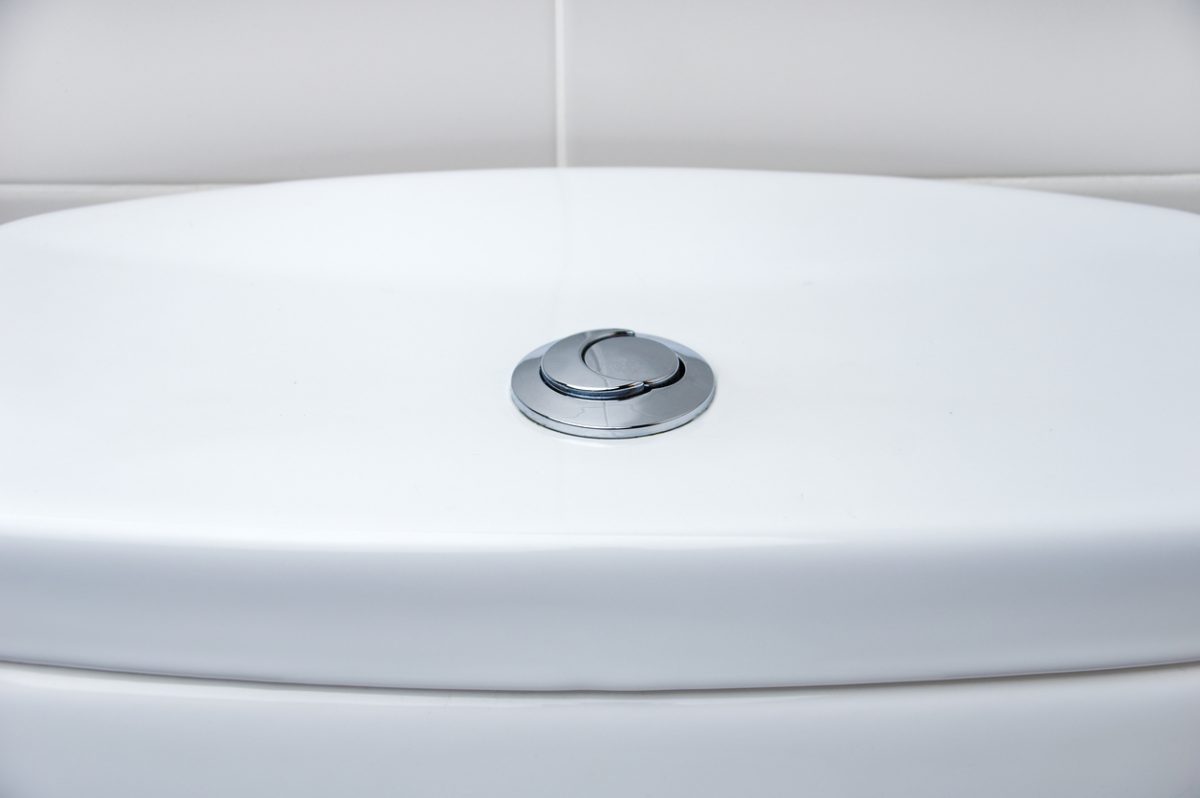We may earn revenue from the products available on this page and participate in affiliate programs. Learn More ›
Many Americans are flushing money down the drain every time they flush their toilets. That’s because they’ve held on to older models that require upward of 3.5 gallons of water per flush instead of switching to newer low-flush toilets, which use 1.28 gallons or less per flush.
Toilets are the main source of water use in the home, accounting for 30 percent of indoor water consumption, according to the EPA. To help cut down on all that wasted water, manufacturers have made increasingly water-efficient models over the past 40 years. Toilets installed before 1980 use 5 or more gallons per flush, and those installed between 1980 and 1994 use about 3.5 gallons per flush. Those installed after 1994 must use no more than 1.6 gallons per flush for a WaterSense label, and newer toilets are even more efficient.
Early models of low-flow toilets had a reputation for failing to always clear the bowl, which often required more than one flush, reducing the benefits of a low-flow toilet. To counter these problems, manufacturers introduced low-flush toilets with better flushing mechanisms and other design improvements. “Older designs did not get the engineering and design rigor that is used today,” says Kohler Marketing Manager Maria Evraets of Kohler, Wis. “The advancement of computers and computational fluid dynamics software, the same software used to design airplanes, allows us to ‘flush’ and optimize a toilet before we make the first one, [ensuring] the most efficient design possible,” she says.
According to Justin Cornforth, experienced plumber and CEO at Ace Plumbing in Greenville, S.C., there are other corrections to those early low-flow designs. “Modern low-flow toilets typically have wider trapways, which allow waste to pass through smoothly without causing blockages in pipes. The trapways of today’s low-flow toilets are also fully glazed, which reduces friction and ensures easy waste removal,” says Cornforth.
If all of the inefficient toilets in homes were converted to WaterSense high-efficiency models, in a single year, Americans could save the equivalent of the amount of water that flows over Niagara Falls in 9 days—and a fair amount of cash, too.

Advantages of Low-Flow Toilets
Since the early 1990s, federal law has mandated that new household toilets use no more than 1.6 gallons of water per flush. These early low-flush toilets certainly helped save both money and water, but today’s high-efficiency toilets (HETs) use just 1.28 gallons—20 percent less—per flush. And some ultra-high-efficiency toilets use just 0.8 to 1.1 gallons per flush.
To earn the WaterSense label, toilets need only meet the 1.6-gallon maximum. According to the EPA, since the WaterSense program’s inception in 2006, WaterSense-labeled products and programs have helped Americans save 6.4 trillion gallons of water and roughly $135 billion on water and energy bills.
In addition to federal standards, several states, including California, Colorado, Georgia, and New York, now require that new toilets meet the more stringent high-efficiency standard of 1.28 gallons per flush. Some states or municipalities also offer tax incentives, rebates, and vouchers to encourage use of low-flow models. Be forewarned, though: If your area offers a rebate, read the restrictions carefully; be sure to purchase a qualifying toilet; and be prepared to gather the required documentation.
While replacing an old water guzzler with a more efficient toilet produces the greatest water savings, even replacing a 1.6-gallon-per-flush toilet with a high-efficiency, 1.28-gallon-per-flush model can make a difference. See for yourself by trying out the WaterSense calculator, which estimates that a family of four can save about 2,400 gallons annually (enough for 58 loads of laundry) by making that switch.
Types of Low-Flow Toilets

When opting for a more efficient toilet, you have several options from which to choose:
- Single-flush low-flush toilets. A single-flush toilet uses the same amount of water for every flush, whether that’s 1.6 gallons (for a standard low-flow toilet) or 1.28 gallons (for a high-efficiency). There are even single-flush ultra-high-efficiency toilets that use just 0.8 gallons per flush. Single-flush toilets are the most common type and generally the least expensive, with prices as low as $100.
- Dual-flush high-efficiency toilets. A dual-flush toilet offers the user two options for flushing: a full flush designed for solid waste, or a low-output flush designed for liquid waste. The average water usage for dual-flush systems can be as little as 0.96 gallons per flush. Current high-efficiency dual-flush models typically offer 1.1/1.6, 0.8/1.6, or 0.8/1.28 gallons per flush and range in price from $150 to $1,000.
- Pressure-assisted toilets. Unlike the standard gravity-fed toilet, these models use pressurized air to propel water through the system with greater force and can therefore work with less water per flush—as little as 0.8 gallons. Most range in price from $200 to about $700.
- Composting toilets. Also known as biological toilets, these use little or no water and do not release waste into a sewage system or septic tank. Instead, composting toilets collect liquid and solid waste, holding it in storage bins either underneath the toilet or in a separate tank, breaking the waste down into compost. Used properly, composting toilets are sanitary and odor-free but might not be suitable for urban environments. Prices for composting toilets vary greatly, depending on capacity and style, but can range from $350 to $3,000 and up.
What to Consider When Replacing a Toilet

When opting to replace an old toilet or upgrade bathroom fixtures, it helps to consider a few pros and cons of each toilet type, along with existing plumbing features and your DIY skills (or willingness to pay a plumber to install a new toilet).
- Single-flush toilets: A low-flow single-flush toilet that uses 1.6 gallons per flush won’t save as much water (or money) as a dual-flush, high-efficiency, or ultra-high-efficiency model, but it is the most affordable option, and it’s still an improvement on the more-than-double water usage of a pre-1994 toilet. Before purchasing a new single-flush toilet, confirm whether your state requires that new toilets meet the high-efficiency standard of 1.28 gallons per flush.
- Dual-flush toilets: Because most flushes involve just liquid waste, a dual-flush toilet will save more water than a single–flush toilet. But dual-flush toilets have a higher upfront cost than single-flush types, plus they’re more complicated to service. In addition, some users (especially guests) might find the buttons confusing or inconvenient—and you won’t save any water if everyone simply opts for the stronger flush.
If you’re somewhat handy and not yet ready to make the dual-flush plunge, you might want to install a dual-flush conversion kit, which turns a single-flush into a dual-flush toilet. Conforth advises those shopping for a dual-flush conversion kit to look for “kits that fit standard two-piece toilets, have clear installation instructions, and include high-quality components such as durable valves and seals.” - Pressure-assisted toilets: These use less water than gravity-fed toilets, and their powerful flush tends to leave the bowl cleaner. Pressure-assisted toilets are also less likely to form condensation. But they’re more expensive and they can cost more to maintain and repair. Homeowners considering a pressure-assisted toilet should be aware of their minimum water pressure requirement for the home (typically around 25 pounds per square inch, or PSI) and their noise level. As Evraets notes, “The pressure tanks create a tremendous amount of energy and can be very loud when flushed.”
- Plumbing limitations: Low-flow toilets require that the waste pipe have a steep enough slope to drain properly. This shouldn’t be a problem; Evraets says that all low-flow toilets are designed and tested to meet the minimum code requirement. Cornforth warns, however, “If you have a conventional toilet now and want to switch to a low-flow toilet, make sure that your existing plumbing has the proper pitch. Otherwise, it won’t be able to handle the reduced water flow, and this can lead to frequent clogs.” To find out whether your plumbing is up to the task, consult a professional plumber.
Water Conservation and Lower Utility Bills
If you decide that it’s time for a toilet upgrade, you’ll have a wealth of options. Nearly all major bathroom fixture manufacturers offer some form of high-efficiency toilet, and the EPA lists more than 5,000 models that qualify for a WaterSense label.
The water savings can be impressive. The average person flushes the toilet nearly 140,000 times over a lifetime, according to the EPA. By replacing an older, inefficient toilet with a WaterSense-certified model, a family can save as much as 13,000 gallons of water per year.
The EPA further estimates that if a family of four replaces its home’s older toilets with WaterSense-labeled models, they save an average of more than $90 per year on their water utility bills, adding up to $2,000 over a toilet’s average lifetime. Now that’s a lot of dough that doesn’t have to be flushed down the drain!


